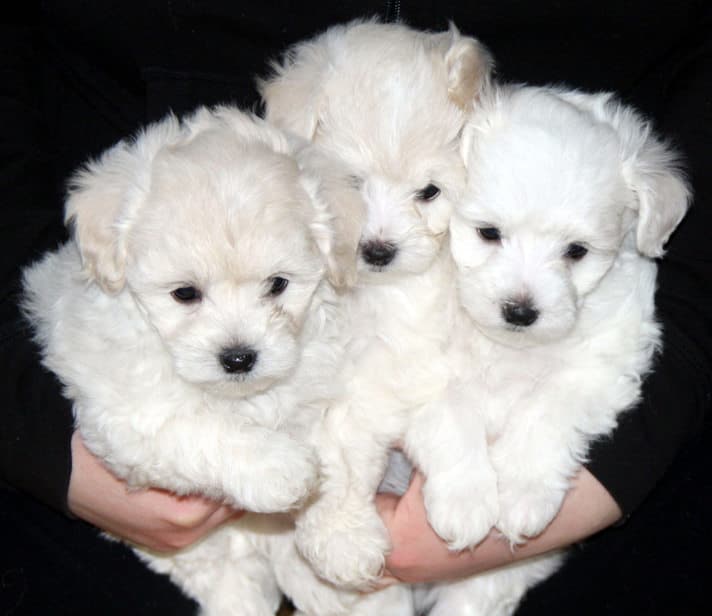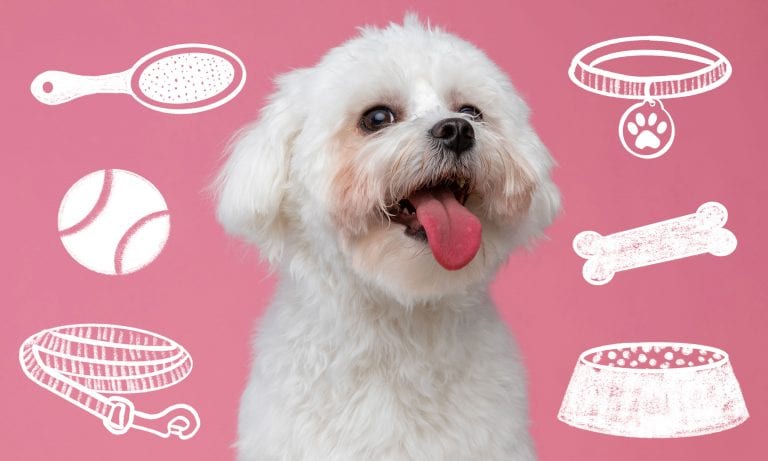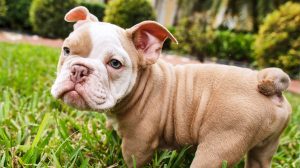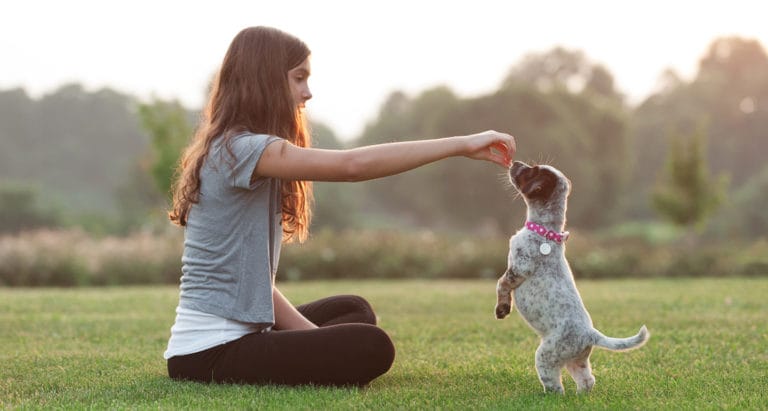If there is something more enchanting than a puppy, I have never seen it. Big eyes, sweet expressions, round little bodies and that puppy hair! No matter if a pup is destined to have a short, smooth coat or long, lovely locks, puppy coat is something special. Soft, smooth or fluffy, usually shorter than what the adult coat will be, it invites us to touch and cuddle.
Depending on the breed, puppies begin to shed their baby coats around 6 months of age. In some breeds it can take two years or more for the adult coat to reach its mature glory. You may not notice much of a change, depending on your dog. Smooth-coated breeds, such as my Pug, develop a harder, glossier coat as they mature, but it is not all that much longer than the fur she sported when she was a “toddler.” However, double-coated breeds like Pomeranians, Collies, Huskies and such, sometimes begin to look a little bedraggled and moth-eaten as the puppy coat falls away and the adult coat takes its place. Some people refer to this phase as “the puppy uglies.” And then there are breeds with very long coats like Poodles, Bichon Frises, Afghan Hounds and the like. These dogs need some special care to usher the puppy coat out and the mature coat in.
Great Grooming For a Great Coat
For all coated dogs, regular brushing can really help the transition along. There are many choices of combs, brushes and shedding tools on the market. To find what is best for your dog, talk to breeders, groomers or other knowledgeable people to help you make the best choice for your dog’s coat type. A soft rubber curry comb that works perfectly on a Whippet will be useless on a Shih Tzu, and your Doberman does not need a slicker dog brush, but a shedding tool will really help you out. I recommend you invest in quality tools, because if you take proper care of them and don’t let your pet use them for dog toys, a good brush will last your dog’s lifetime.
Coat care does not have to be a daunting chore. Arm yourself with some high-value dog treats, (something your dog really loves but does not get too often) and your grooming tools. For many breeds, just a few moments of brushing every other day will keep their coat in good shape. Getting your pup used to being handled and brushed will set him or her up for a lifetime of enjoying the process. Let your puppy smell the tools and look them over. Then, starting on the back, gently brush from shoulders to rump, praising the puppy as he takes in this new sensation. Give him a little treat and then try brushing the legs, tummy and tail. Make your sessions short at first, but gradually add in handling the puppy’s paws, examining his ears, and mouth, and making sure you can brush and comb the entire body without any puppy tantrums. Reward good behavior with little treats, and always end the session on a happy note, when the pup is being well-behaved.
As coat change begins in earnest, you may find you need to increase the time and frequency of your grooming sessions. In long-coated breeds, the coat may begin to tangle very quickly. This is because as the soft puppy fur leaves the hair follicle it can become trapped in the new, longer adult coat. When my Poodle went through coat change I was known to quip, “If I brush her from nose to tail, by the time I’ve got her tail detangled her head is already knotted back up!” Some people opt to have their professional groomer give their longhaired dog breed a short trim during coat change to help reduce the matting problems that can occur during the transition.
The Science Of Hair Growth
A dog’s hair grows from follicles in the skin. Whereas humans have just one hair coming out of each follicle, dogs have compound follicles that can each produce up to 20 hairs! In most dog breeds there is one longer, glossier primary or guard hair and many softer secondary hairs coming from each follicle.
Dog hair grows in distinct cycles:
- Anagen: the growth period
- Catagen: the phase where the hair transforms from growing to resting
- Telogen: a phase of inactivity
- Exogen: the period where hair falls from the follicle
Despite what you may have heard, all dogs shed. Even “hairless” breeds usually have some hair on their heads, tails or feet — and those hairs will follow the above cycle and shed out at some point. Shorthaired breeds shed a lot, because each hair completes its growth cycle in a short span of time, just days or weeks. Dogs with very long coats, such as Old English Sheepdogs, Lhasa Apsos, Poodles and such, are often referred to as “non-shedding,” because it can take years for hair to complete the growth cycle, so they seem not to shed at all.
Besides the genetically predestined cycle, there is seasonal shedding. As the days become shorter in autumn, it triggers dogs to release their light summer coat to make way for the thicker protection they will need for the cold months. Then, in the spring, when days become longer, the additional light signals to the dog’s body to release that winter coat so the summer coat can grow in. Spending additional time grooming your dog in the spring and fall can help reduce the pet hair tumbleweeds that seem to materialize under furniture and along baseboards. Keep in mind that when pets shed, they should shed fairly evenly all over their body. If you see areas that are very patchy or devoid of hair altogether, a visit to your veterinarian is recommended.
Tips To Control Shedding
Here are some suggestions to help keep shedding hair under control:
- Invest in the proper grooming tools for your pet’s coat and spend several minutes each day removing loose hair before it falls on its own.
- Have your pet professionally groomed, or arrange to bathe, dry and brush your pet completely on a regular basis. A proper bath can remove a lot of dead coat in a hurry.
- A damp kitchen sponge can work miracles helping to lift hair from carpet and upholstery.
- A light mist of static reducing spray on rugs and fabric will make it easier to lift up shed coat with cleaning tools.
- Keep several lint brushes on hand in different places to do quick cleanups on clothes and furniture.
- Feed your puppy a proper diet and make sure he is free of internal and external parasites. This goes a long way toward maintaining a healthy, beautiful coat. Your puppy’s coat is his first source of protection from the elements , and a mirror of his general health. Enjoy your puppy’s sweet coat and keep it brushed to smooth the transition from baby fluff to adult fabulous.
By: Daryl Conner
Featured Image: Smuayl/Thinkstock
Share:









